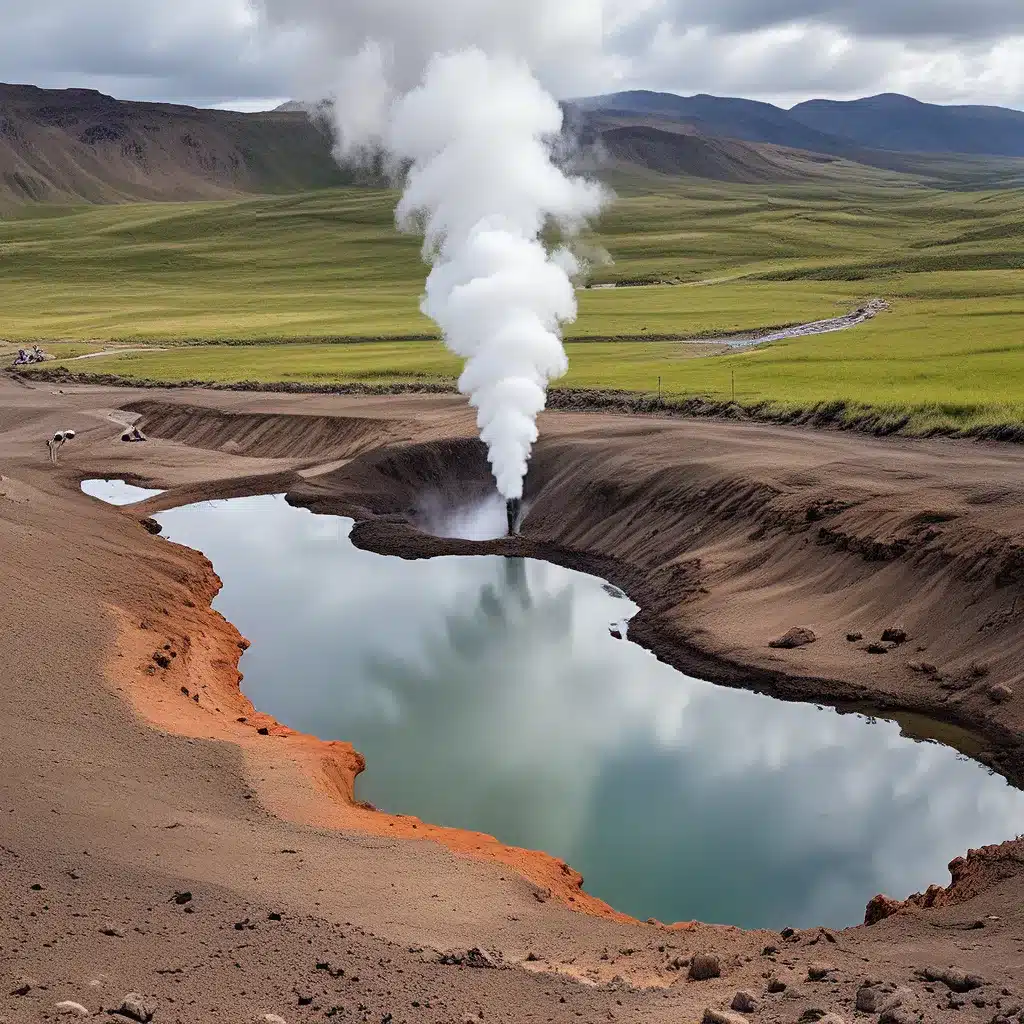
As we navigate the ever-evolving world of renewable energy, one particular power source has been quietly making waves – geothermal energy. While solar, wind, and hydropower have dominated the headlines, the potential of geothermal power is slowly but surely capturing the attention of businesses and policymakers alike.
Demystifying Geothermal Energy
Geothermal energy is the heat that naturally radiates from the Earth’s molten core, and it has the unique advantage of being a reliable, baseload source of renewable power. Unlike intermittent solar and wind, geothermal plants can operate 24/7, providing a consistent and dependable stream of electricity.
But harnessing this energy source is no simple task. It requires specialized knowledge, complex infrastructure, and navigating a maze of regulatory frameworks. As a business leader or sustainability-minded individual, understanding the nuances of the geothermal landscape is crucial if you want to unlock its full potential.
The Regulatory Quagmire
One of the biggest challenges in the geothermal realm is the patchwork of regulations that governs its development and implementation. Unlike the relatively straightforward world of fossil fuels, where the rules are well-established, the geothermal space is a veritable minefield of compliance requirements.
Recent research has highlighted the stark contrast between the regulatory approaches to geothermal energy and other extractive industries, like shale gas. While the UK government has taken a more stringent stance on induced seismicity related to shale gas, the geothermal industry has been left with a lack of cohesive regulatory framework or clear guidance on community engagement.
This regulatory patchwork can be a significant barrier to entry for businesses looking to invest in geothermal power. Navigating the varying rules and guidelines across different jurisdictions can be a daunting and time-consuming process, requiring a deep understanding of both the technology and the local political landscape.
Overcoming the Regulatory Hurdles
So, how can businesses and policymakers overcome these regulatory hurdles and unlock the full potential of geothermal energy? The key lies in a multifaceted approach that combines strategic planning, stakeholder engagement, and a commitment to sustainability.
Streamlined Regulations and Policies
First and foremost, there is a pressing need for more systematic and consistent geothermal regulations and policies. Governments and regulatory bodies must work together to establish a clear and coherent framework that provides both the industry and the public with a sense of certainty and predictability.
This could involve the development of national or regional guidelines for geothermal development, including standardized procedures for permitting, environmental assessments, and community engagement. By creating a more streamlined and transparent regulatory landscape, businesses can more effectively navigate the complexities of geothermal power.
Collaborative Stakeholder Engagement
Alongside regulatory reform, stakeholder engagement will be crucial for the successful deployment of geothermal energy. This means actively involving local communities, environmental groups, and other interested parties in the decision-making process from the very beginning.
By fostering open and honest dialogue, businesses can address concerns, build trust, and ensure that geothermal projects are designed and implemented in a socially and environmentally responsible manner. This collaborative approach can help mitigate the risk of public backlash and opposition, which has historically been a significant barrier to the adoption of other extractive industries like shale gas.
Sustainable and Innovative Solutions
Finally, the geothermal industry must continue to embrace sustainable and innovative solutions that maximize the benefits of this renewable power source while minimizing its environmental impact. This could involve the development of advanced drilling and well-stimulation techniques, the integration of energy storage systems, and the exploration of novel applications like direct-use heating and cooling.
By investing in research and development, businesses and policymakers can drive the evolution of geothermal technology, making it more efficient, cost-effective, and responsive to the needs of local communities and the environment.
The Future of Geothermal Power
As the world continues to grapple with the urgent need for carbon-neutral energy solutions, the role of geothermal power is likely to become increasingly significant. While the regulatory landscape may currently be a patchwork of complexities, the long-term potential of this reliable and renewable resource is undeniable.
By working collaboratively with policymakers, engaging with stakeholders, and embracing sustainable innovation, businesses can navigate the regulatory maze and unlock the full potential of geothermal energy. And who knows – perhaps one day, the quiet hum of geothermal power will be as ubiquitous as the whir of wind turbines or the glint of solar panels.
After all, as we continue our journey towards a sustainable energy future, it’s essential that we explore every avenue – even the ones that may have been overlooked in the past. Geothermal power could very well be the hidden gem that helps us achieve our goals and build a brighter, cleaner tomorrow.
So, let’s roll up our sleeves, dive into the regulatory landscape, and unlock the true potential of this remarkable renewable resource. The future of energy is ours to shape, and geothermal power may just be the key to a more sustainable and prosperous tomorrow.

